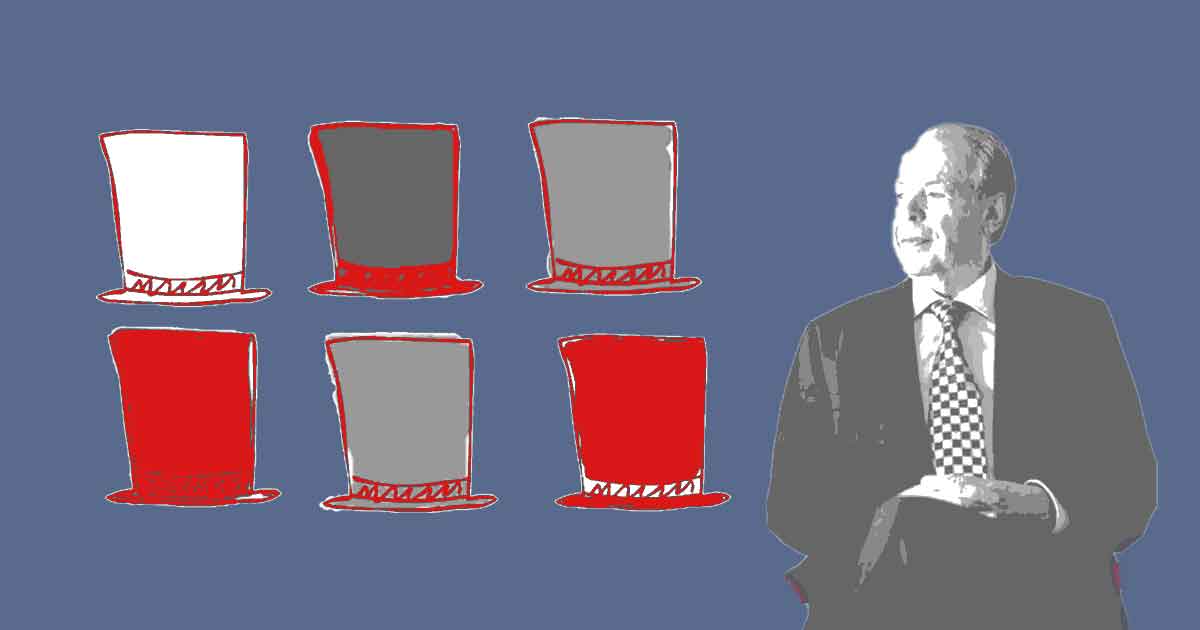
Six Thinking Hats – Edward De Bono
Introduction
I first became aware of this book back in 2009, when a school teacher friend mentioned that he was using it with some 8-year-olds. He explained the basic concept to me, which sounded interesting, but after a few minutes we moved on to other topics. Flash forward to 2018 and I finally got around to reading it . . . impressive, I know!
De Bono sets out on a pretty lofty mission, to help people to think systematically and make meetings more effective. As someone who has been involved in some truly excruciating meetings, I was immediately grabbed by the idea that this could help reduce more mind-numbingly pointless meetings.
The Masks
In summary, De Bono believes that thinking is a skill that we can all become better at it. De Bono likes his analogies and lays them on thick and heavy throughout the book, the overarching one being that we are all actors and we have the ability to wear different masks when we choose to, however most of us favour one mask over the rest (usually the critical one). There are six masks, each represents a particular thinking focus, these are:
White – logic and facts
Red – emotions, and feelings
Black – negativity
Yellow – optimism (how might we?)
Green – creativity
Blue – control, thinking about thinking
So you pop on a particular mask and then think in that way. Simple enough.
(Confusingly, De Bono then switches from the idea of masks to hats, I guess he thought it made for a snappier title!)
The Challenge
De Bono suggests that by challenging people to step outside of their natural thinking style (predominately black or red hat) it forces people to approach an issue from a different perspective. People that had previously excelled at being only critical are now motivated to be seen by their peers as being good at playing all the roles, leading to unexpected outcomes.
De Bono suggests that complexity leads to poor decision making and that in order to make the best decisions we need to simplify things as much as much as possible. To illustrate this point he uses the analogy of a colour printer printing a map. In this analogy, the map represents the environment that the organisation is operating in and the map is constructed one colour at a time (white ink, then black ink etc.) De Bono believes that by using each of the thinking hats separately and adding the insights gained from this focused thinking, a detailed map will be produced and an obvious route to take will be revealed.
De Bono emphasises one point that I’m a huge fan of and that comes under Blue Hat thinking (thinking about thinking). He says that at the outset everyone needs to know the purpose of the meeting and the constraints that the discussions are taking place under. In my experience, far too many meetings lack this focus and end up turning into a meandering chat of seemingly unrelated issues with people leaving the meeting no clearer about an issue than when they went in several hours earlier.
Considering this book was published in 1985, a lot of the speculative examples that he provides seem to have come true, perhaps none so clearly as ‘… There has to be a better way of selling books.’ As soon as I read this I thought, hmm Amazon. I then googled ‘Jeff Bezos meetings’ and found several interesting articles about how he organises meetings. Joining the dots, it seems to me that he may have gained some insight from the ideas held in this book.
De Bono suggests when everyone understands the principals of The Six Thinking then we are able to point out when someone is stuck in one particular thinking style. Whilst I like the idea of being able to call people out on their continual negativity or over-dependence on emotion over logic, I’m not sure how this would go down in a real situation. I guess it would be highly dependent on how invested everyone is in the idea of the Six Thinking Hats.
It’s important to keep in mind that De Bono does not suggest that his approach be applied in all meetings, or that all dialogue needs to follow his process. He does, however, suggest that if everyone involved in a given meeting is familiar with the Six Thinking Hats model then people will have a common language to fall back on and streamline things.
Conclusion
Personally, I can really see the benefits of introducing this tool into meetings, but I think that it needs to be introduced properly and perhaps the fact that there is a learning curve could well put some people off the idea at the outset. For my part, anything that can be done to make meetings more focused and outcome-oriented is a big plus so I will certainly look for opportunities to put this into practice not only with my individual thinking but in group settings too.
Key Take Aways
- Thinking is a skill and that means it can be improved upon
- Most people have a preferred thinking style
- How we think is a choice
- The gamification of thinking can generate enthusiasm from previously ‘stuck’ people
- All meetings should have a clearly stated objective and parameters
- Creativity needs clear boundaries and protection
- If you don’t acknowledge your emotions they will influence the rest of your thinking
Topics covered
Latest articles
April 2, 2025
Written by : Mark Rowland
Mark's been working in and interested in all things marketing since 2010.










